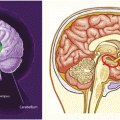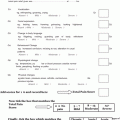© Springer Science+Business Media New York 2015
Verna Benner Carson, Katherine Johnson Vanderhorst and Harold G. KoenigCare Giving for Alzheimer’s Disease10.1007/978-1-4939-2407-3_44. Alzheimer’s: Strips Individuals of All Skills
(1)
C&V Care Specialists, Inc., Fallston, Maryland, USA
(2)
C&V Care Specialists, Inc., Williamsville, New York, USA
(3)
Dept. of Psychiatry Behavioral Science, Duke University Medical Center, Durham, North Carolina, USA
Keywords
Loss of ability to perform instrumental activities of daily living (IADLs)Loss of ability to perform activities of daily living (ADLs)Strategies to deal with loss of abilitiesBathingDressingManaging moneyShoppingCookingEatingToiletingThe tragedy of Alzheimer’s is that not only is it a fatal disease but also it gradually and completely destroys all skills that we associate with adulthood and independence. This stripping away of skills includes the most basic including our ability to manage the minute details of our lives, our finances, our ability to shop and cook for ourselves, bathe, dress and toilet ourselves. No one would choose this.
Instrumental Activities of Daily Living
In a 2011 study that investigated the link between neurocognitive measures and instrumental activities of daily living (IADLs) in women and men with mild Alzheimer’s disease (AD), the results of the study demonstrated that memory and executive functioning were related to IADL scores. Executive functioning was linked to total activities of daily living (ADL) abilities. Comparisons stratified on gender found that attention span predicted total ADL score in both men and women. Attention predicted bathing and eating ability in women only. Language ability predicted specific IADL functions in men (food preparation) and women (driving). The researchers concluded that even in patients with mild Alzheimer’s, the ability to perform IADLs requires complex cognitive processes (Hall et al. 2011). These skills are lost in a relatively orderly and predictable sequence.
When an individual has deteriorated to stage 4 on the functional assessment staging tool (FAST) scale with a cognitive level of somewhere between 8 and 12 years of age, but before there has been a diagnosis of Alzheimer’s, family and friends are noticing changes that are worrisome. Once a diagnosis is made, these same family members and friends recall the early signs that should have alerted them to a problem, but as the changes multiply with increasingly more serious consequences, denial no longer works and Alzheimer’s becomes a reality. Looking back, family members can usually recall the individual losses that gave them cause for worry but somehow they ignored. Perhaps it was the inability to pay bills and manage the checking account that first gave them reason to pause. Or, perhaps their anxiety stemmed from their Mother’s inability to cook anything more than a cup of soup and a grilled cheese sandwich, when they had always known her to be a “world class” cook. Or, perhaps the worry arose when they saw a laboratory report that indicated Mom’s blood sugar was very high, when for years she had done a wonderful job of managing her diabetes. However, as these losses begin to multiply along with the resultant problems from the inability to manage the checkbook; the inability to shop and cook meals that are “diabetic appropriate”; the getting lost in a neighborhood where the parent not only grew up but also raised a large family—denial fails! Loving family members will insist that their loved one see a physician. In fact, some family members will either insist on accompanying that person to the physician’s office or will contact the physician prior to their loved one’s appointment to fill the physician in on the problems that the family is seeing. What the family is observing is the slow degradation of many of the activities and skills that accompany “being an adult.” Alzheimer’s is responsible for these losses and more.
First, the IADLs , including food preparation, housekeeping and laundry, managing financial matters, shopping , using the telephone, taking medication, and handling transportation—all of these skills deteriorate then disappear. Before most individuals have even received a diagnosis of Alzheimer’s, family members and close friends have noted changes. A daughter is puzzled when she calls her mother to get her mother’s cheese cake recipe, only to be given vague directions. A son stops by just to say hello to his father and becomes concerned about the large pile of unopened and presumably unpaid bills piled on the kitchen table. Almost imperceptibly, the skills of being an independent adult disappear.
IADL and ADL
The IADLs include the following skills: managing finances, handling transportation—either driving or navigating public transportation, shopping, preparing meals, using the telephone and other communication devices, managing medications, and performing housework and basic home maintenance. The ADLs include bathing , dressing , and toileting . Let us examine what happens to each of these skills in stages 4, 5, and 6 on the FAST scale.
Stage 4: Mild AD: cognitive level 8–12 years of age.
The diagnosis of AD can be made with considerable accuracy in this stage. The most common functioning deficit in these patients is a decreased ability to manage instrumental (complex) activities of daily life. Examples of common deficits include decreased ability to manage finances, to prepare meals for guests, to take medications as prescribed, to schedule and follow-up for medical and other appointments, and to go to the market for oneself and one’s family. The stage-4 patient has difficulty writing the correct date and the correct amount on the check. Consequently, someone either needs to supervise or assume this responsibility. For the stage 4 individual who lives independently, this difficulty may become apparent in responsibilities such as paying the rent and other bills. A spouse may note difficulties in writing the correct date and the correct amount when the affected spouse is writing checks. The stage-4 person is at greater risk for being taken advantage of by unsavory individuals who prey on individuals with Alzheimer’s and use dishonest means to gain access to the individual’s property, money, and other/or valuables. Writing a grocery list, as well as independently going to the market to buy food and other products is compromised in this stage. Preparation of meals, even for the best cook, becomes compromised. The individual begins to shy away from entertaining others because of a growing awareness of her/his deficits in this area. Even the ability to order food from a menu in a restaurant begins to be compromised. It is not uncommon for the person with AD to hand the menu to a family member or friend and instruct that person to order the meal. During this stage, the individual is still able to dress self independently and with good quality. Although he/she is having difficulty managing the IADLs, ADLs are still appropriate.
Stage 5: Moderate AD—cognitive level on FAST scale 5–7 years of age.
During this stage, when the person is functioning at a cognitive level between 5 and 7 years of age, deficits become even more marked. At this stage, deficits are of sufficient magnitude to prevent independent, catastrophe-free, community survival. Someone needs to shop for and prepare the food, ensure that the rent and utilities are paid, and assist in managing medications—not only ensuring that medications are taken as prescribed but also ensuring that prescriptions are filled. At this level, those with Alzheimer’s can still dress themselves but not always with good quality—the clothing may be poorly matched, unwashed, and inappropriate for the weather or the occasion.
When basic ADLs start to be affected, however, this can present a real challenge for the caregiver. Let us take a look at a case study that presents the challenges that are inherent in bathing someone with AD.
Case study: as told to us by Joan, a family caregiver in California.
My Grandmother moved in with our family when she began to wander and we were concerned for her safety. Her son is my Dad. Besides my Grandmother, there were three of us in the house—me, my Mom, and My Dad. My Grandmother was always a very loving, spirited person. She paid immaculate attention to her grooming. After she had Alzheimer’s for a few years, she cared less about grooming and was agitated around bathing when she moved in with us. When we tried to bathe her she either cried or started screaming. My parents worked long hours, so as the granddaughter I was charged with her personal care. Every time I said, “Come on Gram, let’s take a bath,” she got agitated and refused. Showering was absolutely out of the question for her. I eventually realized that in order to bathe her, I was going to have to make this a special event for her. All her life she loved Motown music and going to her local hairdresser which she thought of as a spa. An idea dawned on me one day—why not make the bathroom like a spa with her favorite music?Stay updated, free articles. Join our Telegram channel

Full access? Get Clinical Tree





